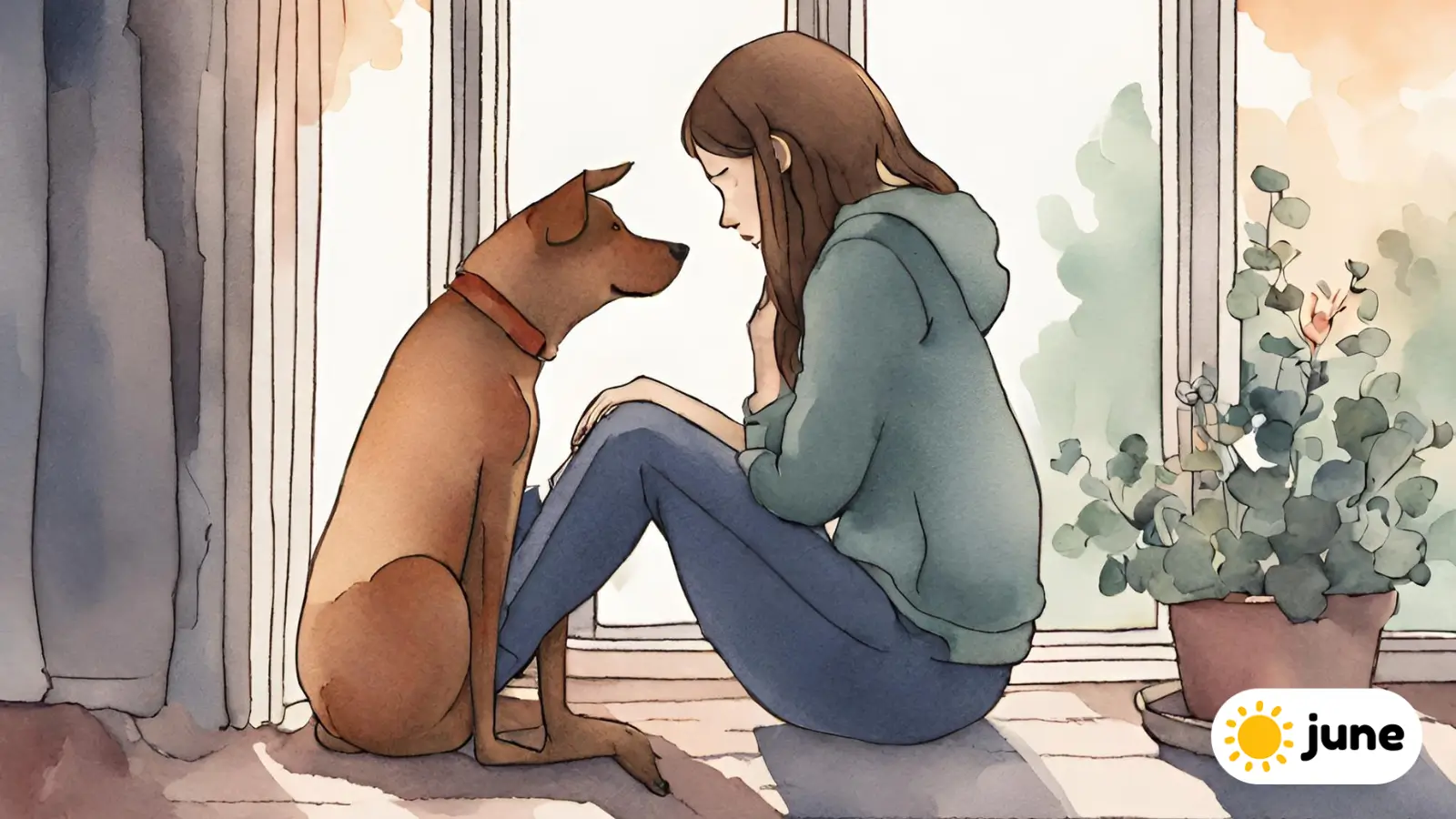Grief is an inevitable part of the human experience, a natural response to loss that can be emotionally taxing. Coping with grief requires an understanding of the intricate process it entails. One effective tool for navigating this emotional journey is the use of a grief journal. In this article, we will delve into the profound benefits of grief journaling, providing insights on how to embark on this healing process, and offering prompts to guide you through the pages of your grief journal.
Understanding Grief
Grief is a complex emotional response, a kaleidoscope of feelings that may include sadness, anger, guilt, and confusion. It is crucial to acknowledge that each person experiences grief uniquely, with no predefined right or wrong way to grieve. This understanding forms the foundation for embracing the diverse range of emotions that may surface during the grieving process.
Navigating grief involves recognising the ebb and flow of emotions. From the initial shock of loss to the quiet moments of solitude, grief takes on different hues. It’s not a linear journey but a meandering path through the landscape of memories and emotions. Acknowledging this complexity allows individuals to be more compassionate towards themselves and others as they navigate the uncharted territories of grief.
Signs of Grieving
Recognizing the signs of grieving is essential for both self-awareness and seeking support when needed. Feeling overwhelmed, difficulty sleeping, loss of appetite, and a sense of disconnection from others are common indicators. Acknowledging these signs is the first step towards fostering an environment of compassion and understanding, both for oneself and those around you.
The physical and emotional toll of grief can be profound. Sleepless nights and altered eating patterns may accompany the emotional turbulence, creating a ripple effect on overall well-being. Understanding these signs not only helps in seeking the right support but also prompts a gentle acknowledgement of the body’s response to loss.
Stages of Grief
The stages of grief—denial, anger, bargaining, depression, and acceptance—are well-documented, yet it’s crucial to comprehend that these stages are not a linear roadmap. Every individual navigates through these stages at their own pace and in their own way. This acknowledgment allows for a more patient and empathetic approach to the grieving process.
Denial
Denial often marks the initial stage of grief. It acts as a protective mechanism, providing a buffer against the overwhelming emotions associated with loss. During this phase, individuals may find it challenging to accept the reality of the situation, clinging to a sense of disbelief as a shield from the pain.
Anger
Anger emerges as a fiery response to the perceived injustice of loss. This emotion may be directed towards oneself, others, or even the departed loved one. It is crucial to understand that anger is a natural part of the grieving process, providing an outlet for the intense emotions that accompany loss.
Bargaining
Bargaining involves a desperate attempt to regain control or alter the outcome of the loss. Individuals may find themselves reimagining scenarios, making promises, or seeking ways to reverse the situation. It’s a phase characterized by a profound sense of longing and a yearning for a different reality.
Depression
Depression is a quieter, more introspective phase of grief. It involves coming to terms with the magnitude of the loss and the changes it brings to one’s life. Feelings of deep sadness, isolation, and a sense of emptiness often permeate this stage. It’s crucial to differentiate between clinical depression and the normal grieving process, seeking professional help if needed.
Acceptance
Acceptance is not about forgetting or moving on, but rather finding a way to coexist with the loss. It marks a significant milestone in the grieving process. This stage doesn’t imply the absence of pain but reflects a gradual adaptation to the new reality. It involves integrating the memories of the departed loved one into one’s life in a way that fosters healing and growth.
Understanding these stages is pivotal, as they provide a roadmap for navigating the emotional terrain of grief. It’s important to note that these stages may not occur in a linear fashion, and individuals may find themselves revisiting certain stages multiple times.
Benefits Of Using A Grief Journal
The benefits of grief journaling extend beyond a mere documentation of feelings; it becomes a dialogue with oneself. As the words flow, they unveil layers of emotions, offering a tangible form to the intangible pain. This process allows individuals to witness their own emotional evolution, marking the milestones of healing and acknowledging the resilience that emerges from vulnerability.
How To Start A Grief Journal
Finding a quiet, comfortable space and dedicating a specific time each day for journaling creates a routine that can be immensely grounding. The simplicity of this practice makes it accessible to everyone, offering an outlet for expression in the midst of pain.
The empty screen on the journaling app can initially seem daunting, but it also holds the promise of catharsis. Consider your journal a sacred space, free from judgment and expectations. Begin with a simple acknowledgement of the day, allowing your thoughts to flow organically. You may find solace in recounting memories, sharing anecdotes, or simply expressing the raw emotions that surface.
Prompts For Grief Journal
Grief journal prompts serve as gentle guides, sparking introspection and aiding in the articulation of complex emotions. These prompts may include recounting a cherished memory of the person you lost, expressing feelings of anger or guilt, and reflecting on personal growth and healing. The key is to remember that there are no rigid rules; write what feels most cathartic in the moment.
Revisit a Beautiful Memory
Take a moment to transport yourself to a cherished memory with your loved one. Describe the scene, the emotions, and the sensory details. Let the words flow as you relive that precious moment. This exercise not only honors the memory but allows you to experience the joy and connection that transcends time.
Expressing Anger and Guilt
Emotions such as anger and guilt are natural companions on the journey of grief. Use your journal as a confidant to pour out these emotions. Write a letter expressing your anger or guilt without censorship. Allow the words to be raw and unfiltered. This release can be profoundly liberating, paving the way for healing.
Reflection on Personal Growth
Grief is not only about loss; it’s also about transformation. Reflect on the ways in which you’ve grown since the loss. Have there been moments of unexpected strength? What lessons has grief taught you about resilience and the capacity of the human spirit? Write with an open heart, acknowledging the silver linings woven into the fabric of loss.
A Letter to Your Future Self
Consider writing a letter to your future self, envisioning a time when the sharp edges of grief may soften. Share your hopes, fears, and aspirations. This exercise provides a perspective on the evolving nature of grief and the possibility of a future where joy coexists with the memory of loss.
Exploring the Five Stages
Dedicate journal entries to each of the five stages of grief. Write about your experiences, thoughts, and emotions during each stage. Reflect on how you’ve navigated through these stages and any insights gained along the way. This comprehensive exploration can provide a holistic view of your grief journey.
The Role of Rituals in Your Healing
Explore the rituals you’ve established as part of your grieving process. Whether it’s lighting a candle, visiting a special place, or engaging in a specific activity, write about the significance of these rituals in your healing journey. Rituals can become powerful anchors, providing a sense of connection and comfort.
Dreams and Their Impact
Reflect on any dreams or visions you’ve had involving the departed loved one. Dreams can be a unique channel of communication and processing emotions. Write about the emotions evoked by these dreams and their impact on your understanding of the grieving process.
Diving Deeper into Grief Journaling
The Role of Creativity in Grief Journaling
Grief journaling can transcend the boundaries of conventional writing. Engaging in creative expressions such as drawing, painting, or even creating a collage can be powerful ways to communicate complex emotions. The abstract nature of art allows for a visceral exploration of grief, providing an alternative avenue for expression.
Consider dedicating a section of your journal to visual representations of your emotions. Let colors, shapes, and textures speak the unspoken. This visual dialogue can offer insights into the depth of your feelings, providing a unique perspective on your grief journey.
Establishing Rituals in Grief Journaling
Creating rituals around your grief journaling practice can add a sense of sacredness and structure. Consider lighting a candle, playing soothing music, or incorporating mindful breathing exercises before you begin. These rituals signal to your mind that this is a dedicated space for introspection, fostering a deeper connection with your emotions.
Rituals not only create a conducive environment for journaling but also serve as anchors in the unpredictable sea of grief. As you engage in these rituals, observe the subtle shifts in your emotional landscape. Rituals can become a grounding force, allowing you to navigate the depths of grief with a sense of purpose and stability.
Seeking Connection Through Grief Journaling Communities
Grief can be a lonely journey, but the act of journaling doesn’t have to be solitary. Numerous online communities and forums provide a platform for individuals to share their grief journaling experiences. Connecting with others who are navigating similar emotions can offer validation, support, and a sense of community.
Joining a grief journaling community allows you to share your story, read about others’ experiences, and gain insights into different coping mechanisms. The collective wisdom of a community can be a source of comfort and encouragement. In a shared space, the weight of grief becomes a little lighter as you realize you’re not alone on this journey.
Conclusion
Grief is undeniably challenging, a journey through uncharted emotional terrain. However, the practice of grief journaling stands as a beacon of solace amid the storm. By comprehending the stages of grief, identifying signs of grieving, and engaging with thoughtful prompts in a grief journal, individuals can embark on a path of healing and personal growth. The pages of a grief journal become a canvas for the heart’s expression, offering a tangible way to navigate loss and find strength in vulnerability.
As you embark on this journey of self-discovery through the written word, remember that there is no right or wrong way to grieve. Each page turned is a step towards healing, a testament to the resilience of the human spirit in the face of loss. May your grief journal be a companion, a witness, and ultimately, a source of solace as you navigate the intricate tapestry of emotions that grief weaves.
The exploration of grief journaling is an ongoing process. As you continue to pour your heart onto the pages, you may discover new facets of healing, resilience, and self-discovery. Embrace the evolving nature of your journey and find comfort in the profound connection between introspection and healing. In the tapestry of grief, may your journal be a thread that weaves together the colors of remembrance, growth, and eventual peace.
START JOURNALING




